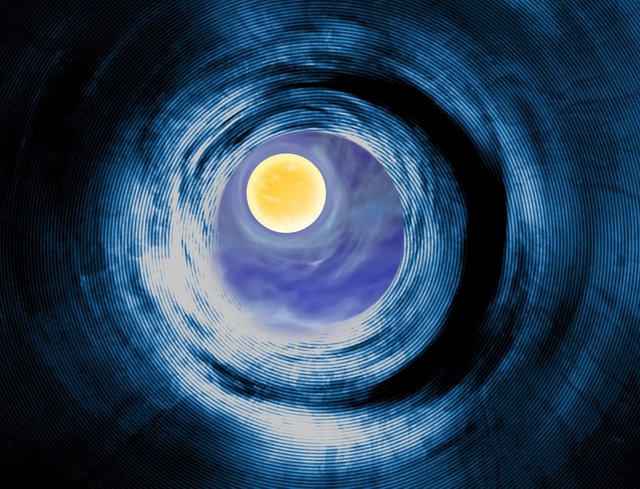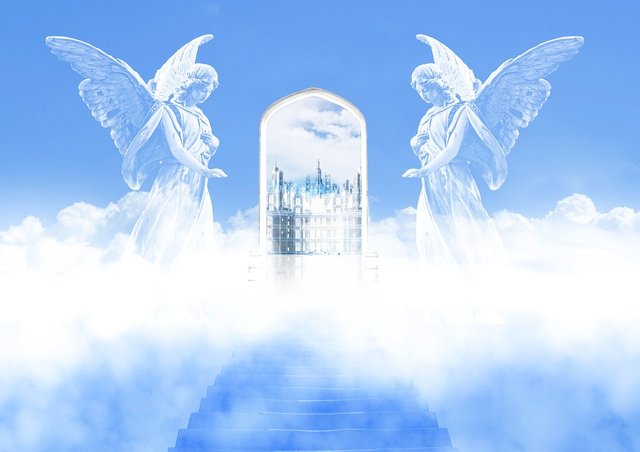Near-Death Experiences, Explained
As I said in my previous article, I have always been quite skeptical. From a very young age I have tried to rationalize and look for a logic-based explanation, although I admit that I have not always been successful. Some have told me that this takes the fun out of life, I believe the opposite is true; just like finding out how a magician performs his tricks, discovering the reason why many seemingly supernatural things happen adds an extra dimension and makes me appreciate them more. If an event is difficult to explain, usually its inner mechanisms are even more interesting than the event itself, and figuring them out can be quite an experience.
Maybe this is one of the reasons why I love medicine and enjoy psychology so much; It is extremely interesting to discover the reason behind things that our body or mind does and about which we almost never think, like yawning, sweating, laughing, or believing that she loved you (she never did). And if I fill up my brain with all this information that, being honest, is relatively useless in most cases, the least I can do is share it with you, my dear audience (in exchange for a small monetary incentive. Write about unnecessary trivia and be paid for it, Steemit is truly wonderful). Today I bring you the explanation behind an event that nobody wants to experience, but about which we have all been curious: Near-death experiences.
Near-Death Experiences, Explained:

We have all wondered if there is really an afterlife, be it a paradise with 7 virgins for each man, a limbo in which we are still present in the world of the living as ghosts, appearing in the backgrounds of photos and closing and opening doors for no reason, or a fiery hell in which we will be placed in a circle depending on our sins, and tortured for all eternity, probably with K-pop blasting in the background. But when it comes to it, there is actually little evidence about its existence, even less than other religious or paranormal events. However, there is a piece of evidence that, for many, confirms that dying is not the end of everything: the experiences of those who have found themselves on the verge of death and have seen things.
Exactly what things vary from person to person; Many see a dark tunnel with a light at the end, with loved ones who already died helping them reach it, or visions of figures dressed in white that some interpret as angels, or as messengers of the god of death (depending on the religious beliefs). Others see their own body from an external perspective, being able to see the circumstances of their (almost) death and concluding that perhaps it was a bad idea to try that autoerotic asphyxiation thing. Most see a summary of their life flash before their eyes, while getting the unmistakable feeling that they are dead, and feeling tremendous inner peace, or insufferable anguish, depending on whether you gave the tithe at church or just went to listen to music and play Angry Birds.
The point is that near-death experiences, although sometimes have small variations depending on the religion of those who suffer them, have a generally uniform description. Also, it is not a new event; there is written evidence of NDE in books from the middle ages, and it is believed that they were known even before that. The oldest medical description of a NDE that has been found so far comes from a paper written by a French doctor in the eighteenth century, so it is known that the event has been considered relevant for medical science for more than 300 years. However, the first serious study was made only in 1975, in it, a psychiatrist interviewed 50 people who had claimed to have an NDE, theorizing that perhaps consciousness exists in an immaterial form, independent of the physical body. But we know that medical science hardly accepts explanations of this type, which is why several other studies have been carried out since then, by doctors of various specialties. And apparently, not everything is as abstract as we thought.

Many of the studies were retrospective, that is, people who had had visions after suffering an accident or illness that left them on the verge of death were interviewed afterwards. But the problem with this is that in most cases, the NDE had occurred years before the interview, so the memories of the event could be altered. In addition, an interview can hardly explain the physiological or brain chemistry changes that may occur while a person is going through one of these situations. For these reasons, the most conclusive studies have had to be preventive, placing instruments near patients with a high probability of suffering a heart attack and of needing cardiopulmonary resuscitation, to study their bodies and brain chemistry during, or immediately after, an NDE. It may seem unethical to ask dying people if they felt that their soul left their body and if they saw the doctors pounding on their chest as if they were playing Whack-a-mole while shouting curses to the heavens, but you know, for SCIENCE.
These studies revealed that virtually all phenomena that occur during a NDE have a medical explanation, and all these processes act together, resulting in a seemingly paranormal and unexplainable experience.
Starting with the most frequently described, the “light at the end of a tunnel”: the most accepted explanation, and probably the most frequent cause, is that during heart attacks and other incidents in which the blood flow to the brain is cut off, the first areas of the head that stop receiving blood are the less vital ones, such as the eyes. This causes a retinal ischemia that manifests as the vision of a dark tunnel with a light at the end; this type of event can also occur when the body faces very intense centrifugal forces, such as when flying a combat aircraft. In addition, damage to the occipital cortex of the brain can cause visions of this type. In some infarcts the flow of blood to the brain is cut off suddenly, in these cases the visions occur in the brief seconds before and after the cardiac arrest; caused by the hypoxia (lack of oxygen) while consciousness is lost, and immediately after recovering it.

The angels, or beings of light, that are reportedly seen in several cases? Their explanation is quite interesting; you see, all living cells and neurons produce particles called Biophotons (also called ultraweak biochemiluminescent photons, you will understand why biophotons is the preferred alternative). The fluorescence of these biophotons is usually too weak to be perceived by the naked eye, which is why we do not glow and shimmer under the sun like a Twilight vampire, but in specific circumstances we are able to see them for brief moments, manifesting as phosphenes (luminous spots that we sometimes see, such as when we rub our eyes a lot). Recent studies have shown that lipid peroxidation (process by which lipids are metabolized) can create biophotons as a byproduct. And, guess which is one of the moments in which this process occurs? That is right; after a cerebral ischemia, right when the blood is returning to the brain. During this reperfusion, a large amount of oxygen-free radicals are created in the brain and retina, which when metabolized produce biophotons that we perceive as phosphenes; bright lights in our visual field. Although I admit that it is more comforting to think that they are angels.
But what about the feelings of euphoria or anguish during NDEs? Their explanation is somewhat simpler: neurochemical imbalances, which also explain the visions of deceased people that some claim to have. When the heart enters ventricular fibrillation (a type of arrhythmia that is usually caused by heart attacks) the brain releases large amounts of dopamine, a neurotransmitter that causes feelings of euphoria and pleasure, and norepinephrine, which causes a state of alertness and wakefulness. The combination of these two neurotransmitters, together with the effect of endorphins (opioids naturally produced by the body in times of stress), creates the feeling of happiness, and norepinephrine in particular makes the event seem “realer than real” and supernatural, as it is usually described by those who suffer it. In addition, drugs used in the medical field such as ketamine and amphetamines can also cause these sensations. And what about those who instead of joy feel anguish and despair? Well, it has been shown that the administration of Naloxone, a drug that blocks the effect of endorphins and opioids, can cause this hellish type of NDE.
The visions themselves are normally caused by another neurotransmitter, serotonin, in combination with noradrenaline, and also by the action of dopamine. Hypoxia also usually causes visual and auditory hallucinations, as well as damage to the frontal and occipital lobes of the brain, especially in the left hemisphere. Now, why are these visions usually of dead loved ones, or of a religious thematic? Well, this is where psychology comes into play; we see people who died because we expect that a near-death experience will be like that. The hypothesis of expectation theorizes that situations that endanger life can initiate mental projections of what we are conditioned to perceive as life after death, that is, if we believe that we will go to Heaven, the visions that we will see will be of us ascending towards the light, perhaps guided by angels (phosphenes), and being awaited by our loved ones who have already died. For this reason, a Christian person can probably see Jesus Christ during an NDE, while a Muslim will surely see Allah, and I would make a joke about Scientology but surely they would sue me.

The feeling of "seeing your whole life flash before your eyes" can also be explained; Experiments have been conducted connecting patients who have suffered NDEs to electroencephalograms and their brain waves have been observed while being asked to remember normal events, and during hypnosis sessions in which they are asked to recall their NDE. These studies showed that during this type of events there were oscillations in the Theta waves, related to the episodic memory processing and its spatio-temporal organization, and in the Delta waves, which have to do with the recollection of past events. However, and contrary to when they were asked to recall other moments of their life, there was no presence of Gamma wave activation, which are linked to the recollection of real memories; events that occurred in the physical world. Put simply, these findings suggest that the memories experienced during NDEs are basically hallucinations in an episodic form of previous memories, but not necessarily real ones, that is, you can "remember" events that never actually occurred, but that after the event (and by the action of the neurotransmitter cocktail described above) seem totally real. Memory is disturbingly easy to manipulate, in short, as any politician knows.
Finally, what happens to those who have an out-of-body experience, being able to see their own bodies while floating in the air? Well, if you have been paying attention, surely you can deduce that this also has a logical explanation. They can be caused by a variety of factors, such as lack of oxygen to the temporo-parietal lobe, related to body perception and that basically gathers all the sensory information it receives from the rest of the body. It is even possible to artificially produce this type of events in controlled environments, electrically stimulating this part of the brain in voluntary subjects, and it is known that it can occur naturally in episodes of sleep paralysis. Ketamine, sometimes used as an anesthetic, has also led to hallucinations and out-of-body experiences.

Now, I admit that there are several cases in which things have happened that defy any explanation written here; patients who describe events that occurred while their brains were practically dead, children having visions during ECMs without being psychologically conditioned to expect them, and a long etcetera. But as I like to say, the fact that we are not able to explain them now does not mean that in a few years they will still remain a mystery. The truth is that the issue of out-of-body experiences and ECMs remains relatively controversial in the medical field, and require many more studies to get to understand it completely, in addition to raising questions about life after death, religion, the nature of consciousness, philosophy and the existence of the soul. I'm still skeptical, but who knows? I have been wrong many times before.
References:
- Near-death experiences: a multidisciplinary hypothesis
- “Reality” of near-death-experience memories: evidence from a psychodynamic and electrophysiological integrated study
- Near-death experience “all in the mind”
- Peace of Mind: Near-Death Experiences Now Found to Have Scientific Explanations
- The Science of Near-Death Experiences
- What Happens To Your Body & Brain During A Near Death Experience?
- Near-Death Experiences: What Happens in the Brain Before Dying
- Phosphenes – Wikipedia
This post has been voted on by the SteemSTEM curation team and voting trail in collaboration with @curie.
If you appreciate the work we are doing then consider voting both projects for witness by selecting stem.witness and curie!
For additional information please join us on the SteemSTEM discord and to get to know the rest of the community!
Congratulations @mike961! You have completed the following achievement on the Steem blockchain and have been rewarded with new badge(s) :
Click here to view your Board
If you no longer want to receive notifications, reply to this comment with the word
STOPDo not miss the last post from @steemitboard:
la ciencia es asombrosa hasta cierto punto, pues la ciencia es ensayo y error y esta limitada dentro de un cubo. como se explican los milagros; como es que Cristo resucito?.. que sentido tiene vivir si mueres y todo acaba?